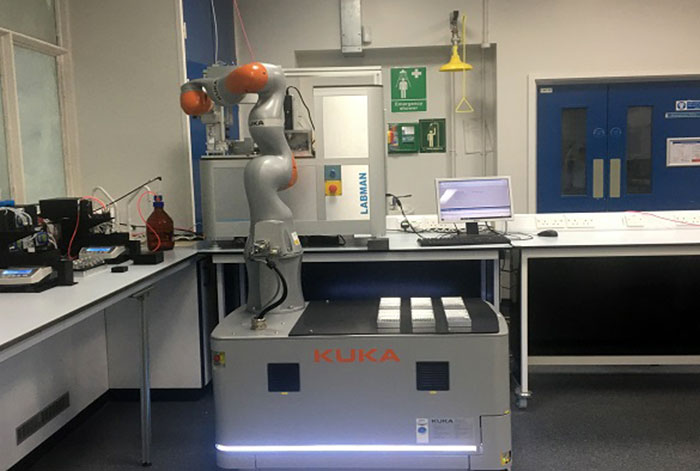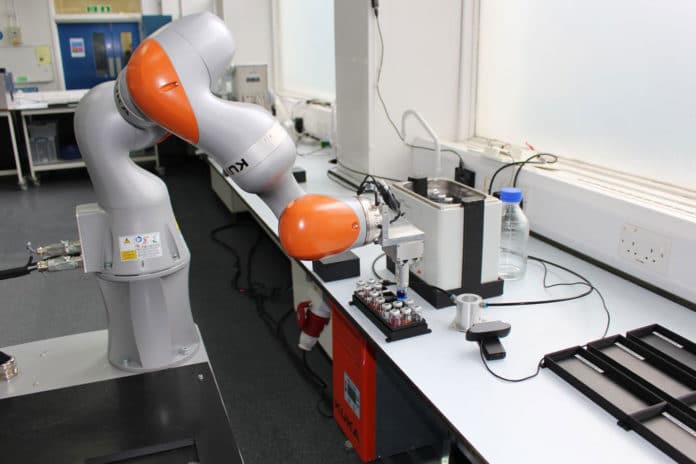We live in a time when robots can clean our homes, drive our vehicles, deactivate bombs, offer prosthetic limbs, help healthcare workers, read the news, entertain, teach, and many more. And now, there is a robot scientist that can work on behalf of humans 24 hours a day, seven days a week.
Researchers at the University of Liverpool have built an intelligent “robot scientist” capable of moving around a laboratory and carrying out scientific experiments by itself. The first of its kind machine with humanoid dimensions are designed to work in a standard laboratory, using instruments much as a human researcher does. It can also make its own decisions about which chemistry experiments to perform next.
The robot scientist is 1.75-meter tall, weighs around 400 kg, and can roam around the laboratory, performing a wide range of different tasks. Unlike a human being, the robot has infinite patience, can think in 10 dimensions, and works for 21.5 hours each day, pausing only to recharge its battery for two hours. This will allow scientists to automate time-consuming and tedious research they wouldn’t otherwise tackle.

The machine does not have a vision system but instead uses a combination of laser scanning coupled with touch feedback for positioning.
The breakthrough robotic lab assistant has already succeeded in discovering new photocatalysts that is six times more active. To achieve this, the robot performed 688 experiments over eight days, working 172 hours, moving 319 times, and handling objects 6,500 times. Among other functions, the robot independently carries out all tasks in the experiment, such as weighing out solids, dispensing liquids, removing air from the vessel, running the catalytic reaction, and quantifying the reaction products.
It uses a search algorithm to navigate a 10-dimensional space of more than 98 million candidate experiments, deciding the best experiment to do next based on the outcomes of the previous ones.
“The biggest challenge was to make the system robust. To work autonomously over multiple days, making thousands of delicate manipulations, the failure rate for each task needs to be very low. But once this is done, the robot makes far fewer mistakes than a human operator,” says Dr. Benjamin Burger, the University of Liverpool Ph.D. student who built and programmed the robotic scientist.
Journal Reference:
- Burger, B., Maffettone, P.M., Gusev, V.V. et al. A mobile robotic chemist. Nature 583, 237–241 (2020). DOI: 10.1038/s41586-020-2442-2
